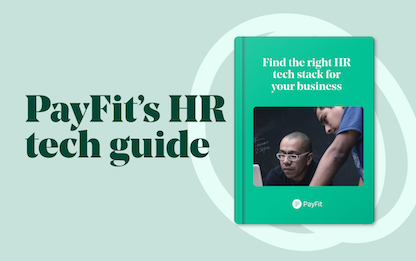- Blog
- |Managing Payroll
- >Payroll data
- >people analytics
Unlocking the Power of People Analytics: How to Build a Data-First Organisation


Power to the people! Or so the saying goes. But the beautiful thing about people analytics is that it harnesses that power from the people as well. Raw data from individuals in teams across the business, such as performance against objectives, the amount of sick leave, salaries, commission amounts and expenses, can be turned into meaningful insights to help improve strategic decision making.
In this post we’ll look at what people analytics is, some examples of it in action, how it differs from workforce or HR analytics, the benefits of people analytics, and how HR teams can work together to create a people analytics framework for the business.
What is people analytics?
As the name suggests, people analytics is all about analysing the data from the people across your organisation. The goal is primarily to identify trends and patterns in order to make strategic HR decisions at a companywide level, however people analytics is also essential for identifying individual trends and performance, to ensure nobody gets left behind.
In either case, the overall aim is to improve the performance and wellbeing of the organisation, its teams and the individuals within them, to retain the right people and to help better recruit in the future.
From a payroll perspective, the importance of people analytics cannot be overstated. Looking at the evolution of salaries, commissions, bonuses and gender pay gaps over time will help HR to work more closely with Finance on initiatives like workforce planning, to plan and budget for pay rises, how to recruit, and to identify any individuals that require immediate action.
The phrase ‘people analytics’ may be used interchangeably with ‘workforce’ or ‘HR analytics’, and the phrase ‘analytics’ may be replaced with ‘reports’ or ‘intelligence’. It’s typically done by using software, but at a team level, taking the temperature of its members and reporting back to HR can help to further inform employee satisfaction and wellbeing metrics.
What does the ‘7 pillars of people analytics’ refer to?
The general consensus is that there are 7 pillars of people analytics, spanning culture, talent, planning, performance and engagement, which, if utilised in harmony, can help drive better business results. As we’re talking about payroll analytics too (something PayFit helps to enable), we’d argue there are additional pillars to look at alongside the Finance team. These involve people costs and pay, including deductions, contributions and HMRC liabilities, and how this impacts the bottom line, recruitment and regulatory obligations.
Culture
The beginnings of a people analytics framework lies in assessing cultural or company value-based metrics. So that means employee behaviours, attitudes and relationships. The aim here is to assess whether or not these behaviours are aligned with the defined company culture and values.
It may be that you have your values grounded in collaboration. In this case people analytics can be used to assess the effectiveness of cross-departmental relationships, or those within individual teams, by looking at the outcomes of group projects and initiatives.
Another big part of a successful company culture lies in employee satisfaction, so employee surveys are a good way of taking the pulse of your workforce. This ties into the engagement pillar below, so more on that then.
Talent
Your people are your biggest asset. It’s therefore essential that one of your 7 pillars of people analytics is assessing the degree of talent within your teams. For example, to what extent are individuals hitting their targets and objectives, how long are they taking over projects, are they completing their roadmaps, and how much support do they require from more senior personnel?
All of this helps managers and HR leaders to create better-targeted development plans and to provide support or 1-to-1 mentorship where it’s needed. And if there are skills or talent gaps that exist, then plans can be put in place to address these with targeted recruitment.
Leaders
Another great example of people analytics, assessing the leadership skills of those overseeing people and projects can help inform whether or not they are helping to drive positive outcomes.
You can look at metrics such as engagement, performance and retention across teams and departments to help assess the effectiveness of your leaders. The outcomes of your analysis can help inform which leadership development programs need to be rolled out, or if you need to identify future leaders either externally or internally.
Recruitment
Here’s where workforce planning comes back to the fore. Central to a people analytics framework is understanding where gaps exist across the business that can only be filled by recruiting. By looking at demographics, skills and performance, HR leaders can determine short-term recruitment, as well as longer-term strategies for how to shape the company’s workforce.
It’s also possible to calculate the degree of employee turnover, look at common issues for employees leaving and take steps to address those.
Learning & Development
Much like recruitment, looking into what learning & development is required across teams revolves around being honest about what gaps exist. The difference is, the solution should be seen as an internal one, without the need for additional recruitment. It’s also possible to conduct surveys on the effectiveness of existing training programs to identify where improvements could be made, and better target future initiatives.
Performance
People analytics has traditionally been seen as a way of monitoring and improving performance. A common way of doing this is through looking at performance reviews and 1:1 trends, assessing whether or not targets are being hit and if projects are completed satisfactorily and on time.
The datasets can be used to better tailor the structure of performance reviews, and to define how goals are set to make them more realistic and effective, to translate into a better equipped, more motivated workforce.
Engagement
Very closely connected to the ‘culture ’ pillar, employee engagement is a great people analysis metric by which HR leaders can determine if crucial pillars of the organisation are at risk of leaving, or their wellbeing and output dropping. Monitoring engagement metrics can help to create a more supportive, stable working environment, and provide the initiatives tailored to individuals who are deemed to be ‘at risk’.
People costs
OK, so it’s an 8th pillar, but we feel that assessing how much your employees are costing the business is crucial for effective relationships between HR and Finance.
For example, what are the bottom line gross salaries, and how does this impact upon your budget capabilities to do all of those great HR initiatives you’ve planned? And then, how does the amount of income tax, NI, sick pay, pension contributions and expenses add additional budgetary pressure?
All of this will help determine how comprehensively you can recruit, invest in training programs and offer pay rises & bonuses.

Workforce and HR analytics vs. people analytics - what’s the difference?
It’s possible that you’ve heard the phrase ‘HR analytics’ mentioned in the same breath at people analytics. You’ve probably also heard them described as being one and the same. But that’s not strictly true.
Whereas the traditional approach associated with HR analytics is concerned with HR-specific metrics such as employee turnover, retention rates and the effectiveness of training programs, people analytics is more holistic and strategically driven. So it pulls in people-led data from other sources across the business, including finance, operations, and customer service. It provides a comprehensive view of an entire workforce, and its impact on the whole organisation’s performance.
People analytics is cross-functional, meaning it pulls in data from multiple departments. It is forward-thinking, insofar as it aims to forecast future people trends and the impact they’re likely to have. And finally, It is strategic, helping HR and business leaders to make decisions relating to recruitment and organisational restructure.
What’s the importance of people analytics?
It’s a cliche, but people are a business’ most important asset. They build products, provide services, interact with customers, and solve problems. The importance of people analytics lies in its ability to provide the information needed to make data driven decisions that will improve the effectiveness of those people.
One US-based analytics firm reported an 18% improvement in profit margin for companies employing people analytics vs. industry benchmarks, and a return on assets figure of 28% above benchmarks.
So the bottom line is that people analytics tends to help the bottom line!
Creating a people analytics framework
By defining what you hope to extract from and achieve with people analytics, you can create a framework that will underpin all of your future data gathering, analysis and actions off the back of it.
The process of creating a people analytics framework can take many forms, but this is a good process to follow:
Identify the business objectives - The overarching objective may well be to improve the bottom line or profitability, but how do you hope to achieve this? Key results underneath that objective could include improving employee engagement and happiness, reducing churn and recruiting to fill a particular skills gap.
Identify the people-related blockers - These will likely be the opposite of what you’re looking to achieve, for example poor employee engagement or morale, high turnover, and skills gaps.
Determine what data is needed to address these - Once you’ve identified your blockers, you’ll want to understand what data you’ll need to collect in order to assess what’s going wrong, and how to fix it. So this could be performance data, employee satisfaction scores, and manager feedback.
Devise a plan for collecting and analysing the data - Part of this stage may be working out what software or methodology you’ll use, but also who will be responsible and accountable for collecting what.
Agree on what actions will be taken after data collection - Data is nothing without a plan for how to act effectively on it.
To find out more about how PayFit helps businesses gain valuable data and insight on people and pay, get in touch to book a demo with a member of the team below.


UK Expenses Management - A Guide For Employers

Overtime Pay Rates & Laws in the UK

The 2024 UK National Living Wage - An Employer’s Guide

The Cost Of Recruitment In The UK - What You Might Not Know

UK National Insurance Changes for January 2024

